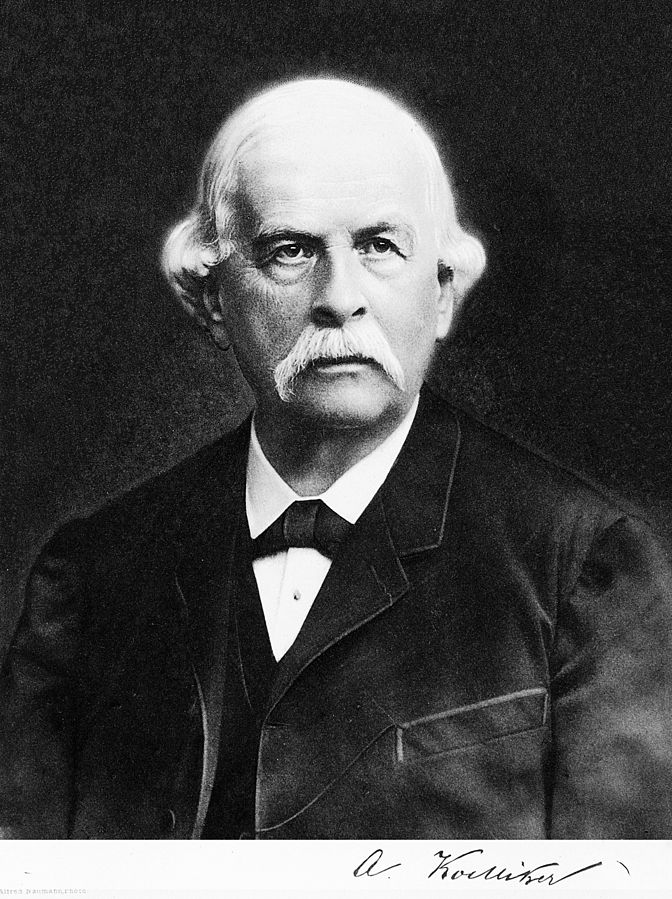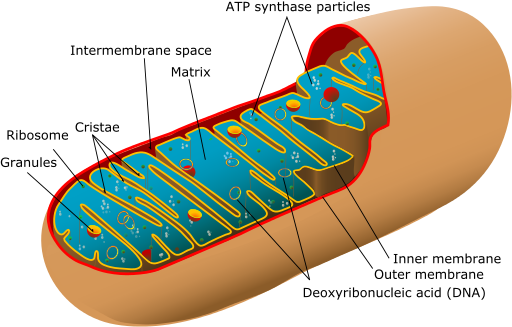Mitochondrion (pl. Mitochondria) is a double membranous organelle in cells of aerobic eukaryotic organisms.
Popularly known as the “Powerhouse of the Cell”, it produces ATP by oxidative phosphorylation. This process uses molecular oxygen for the oxidation of biomolecules like fats, proteins, and sugar to carbon dioxide, water, and energy in the form of ATP.
ATP is the “Energy Currency” of the cell, and the body uses it as the main source of energy.
Mitochondria are not present in anaerobic eukaryotes and prokaryotes. Some cells, like the erythrocytes of mammals, lose it upon maturation.
Mitochondria can be stained differentially by using Janus Green and is distinguishable under a light microscope, although the ultrastructure is studied only under an electron microscope.
Index
History
Mitochondria was discovered by a Swiss anatomist and physiologist, Albert von Kölliker, in 1857 while studying the arrangement of granules in sarcoplasm (cytoplasm of the muscle cell). Carl Benda gave the name mitochondrion in 1897 (Gk. mitos- thread, chondrion- grain)

Mitochondria (and chloroplasts) emerged from endosymbiotic prokaryotic bacteria about 2 billion years ago when a bacterium fused with the ancestor of the eukaryotic cell. This is evident in the similarities between mitochondria and prokaryotic cells.
Structure of Mitochondria

The mitochondrion has two membranes that divide it into an inner and an outer chamber:
- Outer Membrane: It is smooth and more permeable than the inner membrane. It is permeable to most biochemicals due to protein channels called porins. In composition, it is poorer in proteins when compared to the inner membrane.
- Inner Membrane: Only a few metabolites can pass through it. It has an abundance of a double phospholipid called cardiolipin, making it impermeable to ions. The protein content is also high. It is thrown into folds forming involutions called cristae, That increase the physiologically active area. Cristae can be tubular (most plant cells) or plate-like (most animal cells). The inner membrane also possesses racket-shaped elementary particles known as exosomes or F_0 – F_1 particles. Elementary particles function as ATP-ase, thus being the centers of ATP synthesis during oxidative phosphorylation.
- Outer Chamber (Peri-mitochondrial space or Inner Membrane Space): It is space present between the outer and the inner membrane.
- Inner Chamber: It encloses the semi-fluid matrix. The matrix has protein particles, ribosomes, RNA, DNA (mitochondrial DNA or mDNA), and some enzymes for the Krebs or TCA cycle. Mitochondrial ribosomes resemble those present in prokaryotes as they are 55 S to 70 S in nature. The DNA is naked and is generally circular. The presence of DNA makes the ribosome semi-autonomous.
Functions of Mitochondria
- It serves as the site for the complete oxidation of respiratory substrates. The energy liberated in the process is ultimately stored in an energy-rich compound ATP which is then used by the body for various energy-consumptive reactions.
- It provides important intermediates for biochemicals like chlorophylls, cytochromes, pyrimidines, steroids, alkaloids, etc.
- Synthesis of many amino acids like glutamic acid and aspartic acid occurs in the mitochondrion.
- The matrix possesses enzymes for the synthesis of fatty acids.
- It can also store and release calcium as per requirement and regulates it.
Replication and Inheritance
Mitochondrion replicates by binary fission of pre-existing mitochondrion (similar to prokaryotes). The resulting fertilized egg or the zygote receives its mitochondrion from the egg cell during fertilization.
Thus an organism inherits mitochondrion from its mother (maternal inheritance).
Autonomy of Mitochondria
As mitochondrion was initially independent, prokaryotes later assimilated in the eukaryotic cell during evolution, and they show considerable autonomy in their functioning.
The mitochondrion has its DNA (independent replication) and ribosomes, allowing it to produce mRNA, tRNA, and rRNA. It can produce some of the proteins and enzymes required for their functioning.
The mitochondrion is not fully autonomous, as the functions are controlled by its nucleus.
Questions
- What are Mitochondria?
Mitochondria is a double membrane-bound organelle in aerobic eukaryotes. It produces energy in the form of ATP through oxidative phosphorylation.
- Why is Mitochondrion called the “Powerhouse of the Cell”?
The mitochondrion is the leading site for energy production and, hence called the “Powerhouse of the cell.”
FAQs
Besides being the major site for energy production, it also produces some amino acids. It helps regulate calcium metabolism and possesses some enzymes for synthesizing fatty acids.
Mitochondria is a double membrane-bound organelle. The inner membrane is thrown into folds to form involutions called cristae.
Duplication of Mitochondria happen from an individual’s mother (maternal inheritance).
Mitochondria can be observed under a Light Microscope after staining with Janus Green.
Mitochondria were first observed by Swiss anatomist Albert von Kölliker in 1857. Carl Benda gave the name mitochondria in 1897.
Related articles:
